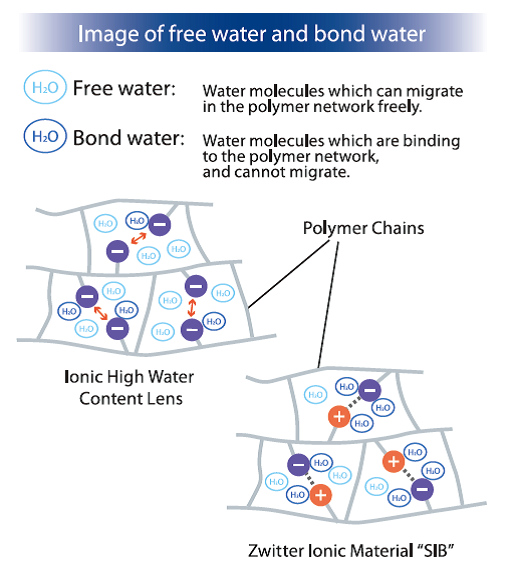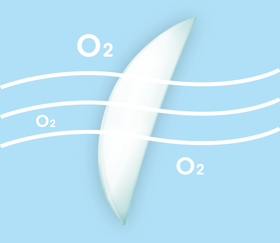

ZWITTERIONIC MATERIAL "SIB"
Zwitterionic material, "SIB" is an original hybrid material of SEED. "SIB" stands for SEED Ionic Bond and ensures biocompatibility. Every pair of SEED PURE series contact lenses is made from original "SIB" material. It contains both positive and negative ions, resulting in electrical stability. This stability keeps out dust and impurities, while ensuring high water content and allowing high level of oxygen permeability.ALL-DAY MOISTURE
Using our original Zwitterionic material “SIB” (SEED Ionic Bond) and Alginic Acid as a natural moisturising agent, SEED 1dayPure moisture lenses retain more water to keep your eyes moist and comfortable for extended hours!


HIGH MOISTURE RETENTION

Moisture in lenses can be classified into two types: evaporative free water and non-evaporative bond water. Zwitterionic material “SIB” contains both positive and negative ions and this helps to attract moisture more firmly. Seed 1dayPure moisture has the ability to retain water and it is highly recommended for wearers who experience dryness in their eyes during the evening.
GOOD DEPOSIT RESISTANCE
"SIB" material properties has the advantage of keeping away proteins depositing on lens surface. This helps to provide better end of day vision and wearing comfort.

Cross section of the lens
The negative ions in the material strongly repel each other, hence making the lens surface negatively charged. Therefore, it attracts the positively charged deposits, e.g. proteins.
Zwitterionic material "SIB"

Cross section of the lens
There are equimolar amounts of positive and negative ions in the material. Thus, there is no deviation of charge on the lens surface. Therefore, it doesn’t attract positively charged deposits e.g. proteins.
Image Of Deposits Resistance
Conventional ionic lens
Cross section of the lens
The negative ions in the material strongly repel each other, hence making the lens surface negatively charged. Therefore, it attracts the positively charged deposits, e.g. proteins.
Zwitterionic material "SIB"

Cross section of the lens
There are equimolar amounts of positive and negative ions in the material. Thus, there is no deviation of charge on the lens surface. Therefore, it doesn’t attract positively charged deposits e.g. proteins.
HIGH OXYGEN TRANSMISSBILITY
SEED 1dayPure moisture excels in morphological stability*. With an oxygen transmissibility DK/T of 42.9, this value is high enough to transmit adequate oxygen which is sufficient to support the ocular health of the eyes so that you can enjoy clear and comfortable vision all day long.


